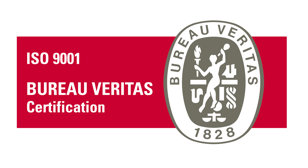Article

Sufficient Disclosure/Written Description: the end of the « antibody » exception in the United States
An antibody can traditionally be described in multiple ways:
- According to the functional definition, an antibody is classically defined by its link to a specific antigen. Once the antigen is known, it is possible to more precisely define the antibody by its link with a specific antigenic determinant.
- According to the structural definition, the most classic definition comes from precision of the 6 CDRs (complementary determining regions). In a more restrictive approach, it is also possible to specify the sequences of two variable regions, or even to indicate the complete sequences of the heavy and light chains.
In conforming to section 112 of Title 35 of the United States Code regarding patent law in the United States, the disclosure of the invention has to be complete enough to enable one skilled in the art to implement, use and understand the invention created by the inventor.
In the case of claims having a large scope, the written description criterion is generally met if the Specification describes structural characteristics that are common to all claimed objects or provides a representative number of individual examples.
Until recently, it was theoretically possible for antibodies linked with a newly identified target to be granted significant protection for all the antibodies binding to the target, even without their being produced, and/or identified and /or without presenting experimental data, as long as the antigen was deemed sufficiently characterized.
This exemption to general practice was specifically provided by the Guidance of the United States Patent and Trademark Office (USTPO), under the name “newly characterized antigen test”. Briefly, according to this test, for antibodies, the correlation between structure and function could be satisfied by the description of the new antigen (structure, formula, chemical name and/or physical properties), if it could be demonstrated that, at the date of filing of the patent application, the knowledge of one skilled in the art was such that antibodies against the new antigen could be produced with techniques used routinely in the field. Several case laws have applied this test.
The 2017 decision of the Federal Court of Appeals, in Amgen v. Sanofi (Amgen v. Sanofi, 872 F.3d 1367 (Fed. Cir. 2017)) reversed the established practice in patentability of antibodies and drastically increased the criteria necessary to meet the written description requirement.
In Amgen v. Sanofi, Amgen filed a complaint against Sanofi for infringement of their patents (US 8,859,741 and US 8,829,165), after Sanofi had obtained FDA approval for their drug Praulent®.
Amgen’s patents concerned an antibody capable of inhibiting the binding between the protein PCSK9 and the receptor LDL-R, thereby leading to a decrease in cholesterol level in the blood. For example, claim 1 of patent US 8, 859, 741 defined the antibody as follows:
“An isolated monoclonal antibody that binds to PCSK9, wherein the isolated monoclonal antibody binds an epitope on PCSK9 comprising at least one of residues 237 or 238 of SEQ ID NO: 3, and wherein the monoclonal antibody blocks binding of PCSK9 to LDLR.”
The description of the invention contained around thirty examples of antibodies, and disclosed the method of screening used by the inventors to identify them, and the 3D structure of two antibodies, notably the antibody commercialized by Amgen under the name Repatha® (evolocumab).
The active ingredient of Sanofi’s drug Praulent® is also a monoclonal antibody. Although its structure differs from that of Amgen’s Repatha®, it is directed against the same target and has the same biological effect (lowering blood cholesterol level).
Sanofi contested the validity of Amgen’s patents in pointing out the insufficiency in their description, but the District Court of Delaware confirmed the validity of Amgen’s patents for Repatha®, and prohibited Sanofi’s competing medication sales.
The Federal Court of Appeals judged that it is not in agreement with previous decisions on this subject, and reversed the decision of the District Court. The court deemed that when the application claims an antibody, it was not necessary to use the « new antigen » test to verify that the application meets to the description requirements. In other words, it is no longer possible to define an antibody simply by its target, even when that target is new.
The USTPO notes that this case law has adapted its practice and published a precise memorandum henceforth:
“In view of the Amgen decision, adequate written description of a newly characterized antigen alone should not be considered adequate written description of a claimed antibody to that newly characterized antigen, even when preparation of such an antibody is routine and conventional".
The references to the “newly characterized antigen test” found in the guidelines and relating to the written description requirement are therefore obsolete and new guidelines will be put forth in due course.
This judgement signifies the end of the « antibody » exception in relation to the sufficiency in description
The Applicants, who used to broadly protect a large number of antibodies by relying on the characterization of a new target, will now have to be particularly attentive to either:
- Describe the common structural characteristics of all the antibodies for which they want to obtain protection – Identifying the common sequences of a class of antibodies can represent a considerable amount of work;
- Provide a representative number of examples covering the scope of the claim– this approach is nevertheless marred by a large uncertainty since the notion of « representative number » is left to the free interpretation of the Examiner or of the Court…
It should be noted that such a limitation does not really exist in Europe; where claims related to antibodies that are defined by their targets remain theoretically patentable.
The eventual difficulties of patentability in Europe come instead from prior art evidence. Indeed, the European Patent Office has long considered the generation and identification of an antibody targeting an antigen to be specifically routine techniques by the skilled person. Such arguments are generally used by the patent applicant or the patented party to raise an eventual objection of insufficient description when said description does not contain the experimental data relative to the claimed antibody. A double edged sword, they can eventually be turned against the entitled person in the form of an objection of inventive step. Thus, the absolute novelty of the antigen is an essential criterion for obtaining the protection of antibodies that are defined by their target; a criterion that henceforth becomes more difficult to meet…

























